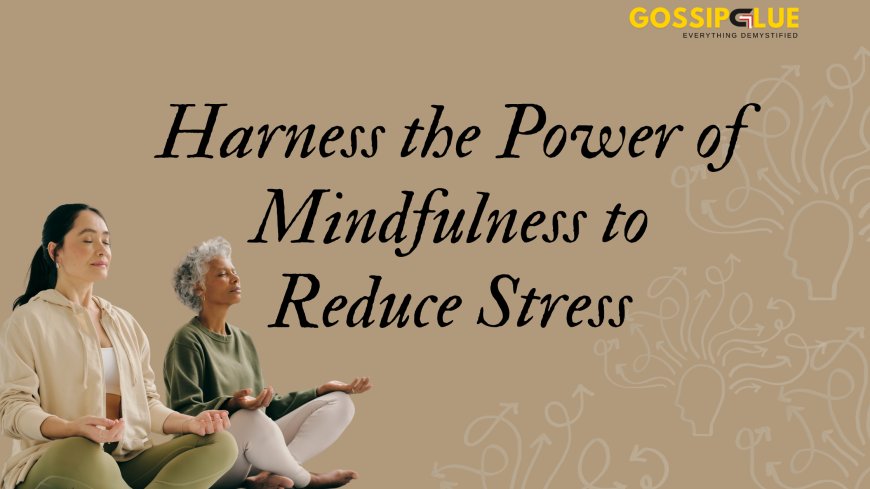Let’s face it: stress is practically baked into the job description when you work in IT. Whether it’s sprint deadlines, endless troubleshooting, or trying to debug a stubborn line of code at 2 AM, our nervous systems are constantly running a marathon they didn’t sign up for.
I remember one particular week when I was juggling three high-stakes deliverables, onboarding a new teammate remotely, and dealing with an intermittent server issue that was maddeningly random. Sleep? Optional. Sanity? Questionable. That’s when I realized—I couldn’t just push through anymore. I needed help managing the pressure. Not just quick fixes, but something sustainable that actually fit into my day-to-day lifestyle.
That’s when I started exploring anti-stress products not just stress balls and herbal teas, but tools and techniques that helped me think, breathe, and be better. And if you’re also feeling the strain of digital life, this guide is for you.
Start by Identifying Your Anti Stress Symptoms
Before you start stocking up on scented candles and foam rollers, take a minute to understand your stress symptoms. Everyone experiences stress differently some of us get brain fog or headaches, others snap at minor annoyances, while a few (like me) just shut down emotionally and keep grinding until burnout hits.
Ask yourself:
-
Do you have trouble sleeping?
-
Are you anxious or irritable for no clear reason?
-
Are you relying too heavily on caffeine or sugar to stay productive?
Recognizing how stress shows up for you will help you choose products that target your specific issues rather than throwing spaghetti (or supplements) at the wall.
Match Products to Your Personality and Routine
One major lesson I learned early: anti-stress products are only effective if they actually suit your lifestyle. You might love the idea of a 45-minute guided meditation, but if you’ve got meetings back-to-back, it’ll gather digital dust in your app drawer.
Here’s a quick breakdown of common stress-busting tools and who they work best for:
🧘 For the Reflective Thinker: Mindfulness Tools
If your stress feels mental—racing thoughts, scattered focus mindfulness can be a game-changer. Try mindfulness apps like Headspace or Insight Timer, which offer quick mindfulness exercises you can do during a break. Even a 3-minute breathing exercise can dramatically reduce tension and boost clarity.
Look into Mindfulness-Based Stress Reduction (MBSR) programs if you’re ready for a structured, research-backed approach. Many are available online now and can fit flexibly into your calendar.
🧴 For the Sensory-Seeker: Aromatherapy and Weighted Gear
If you respond well to sensory input, things like essential oil diffusers, anti-stress roll-ons, or weighted blankets might help. Lavender, eucalyptus, and chamomile are great for calming nerves. Weighted blankets can provide comfort and reduce physical restlessness—especially if stress is keeping you up at night.
💪 For the Mover: Physical Activity Aids
Got restless energy? You may benefit most from active ways of reducing stress. Think stress-relief punching bags, resistance bands, or even anti-stress putty for fidgeting during long calls. These tools channel excess energy and help regulate your nervous system.
Even quick at-home workouts or short walks while listening to ambient music can ground you. Pro tip: pair this with a wearable that tracks your heart rate to notice stress patterns in real-time.
Make It Sustainable, Not Just Instagrammable
We’ve all been there buying that cute “anti-stress” tea set or digital detox journal because it looked great online. But unless it becomes a natural part of your routine, it’ll end up collecting dust next to that unused gratitude jar from last year.
Here’s what worked for me:
-
Stack new habits onto existing ones. I started doing mindfulness breathing while waiting for my morning coffee to brew.
-
Keep things visible and accessible. My weighted eye mask lives on my keyboard now (forced me to actually use it before bed).
-
Don’t overwhelm yourself. One or two well-chosen products are better than a shelf full of unused gadgets.
Tech Solutions Can Help If You Use Them Intentionally
As someone who lives and breathes IT, I know the irony of using tech to fix stress caused by… too much tech. But hear me out—some tools genuinely help when used intentionally.
Try:
-
Noise-canceling headphones for deep work or stress-free commuting.
-
Focus apps like Forest or Pomodoro timers to reduce cognitive overload.
-
Biofeedback tools like Muse or Fitbit stress tracking to monitor progress.
Just make sure you’re not adding stress by trying to “optimize” your relaxation. It’s not a KPI. It’s self-care.
Conclusion: Build a Anti Stress Toolkit That Grows With You
The truth is, there’s no one-size-fits-all solution to reducing stress. Life changes, work shifts, and what works today may not work tomorrow. But building a toolkit of anti-stress products that match your energy, preferences, and goals gives you options when things feel overwhelming.
Start small. Be curious. And remember, taking care of your mental health isn’t a luxury it’s a long-term investment, especially in a high-demand field like tech.
So whether it’s a simple breathing app, a lavender-scented roll-on, or a cozy weighted blanket choose what calms your chaos, not what clutters your shelf.
